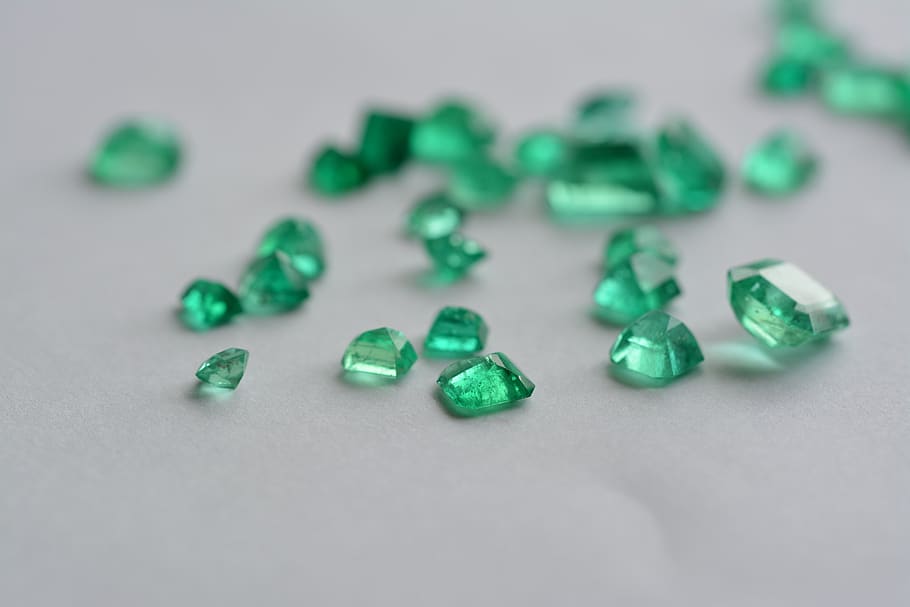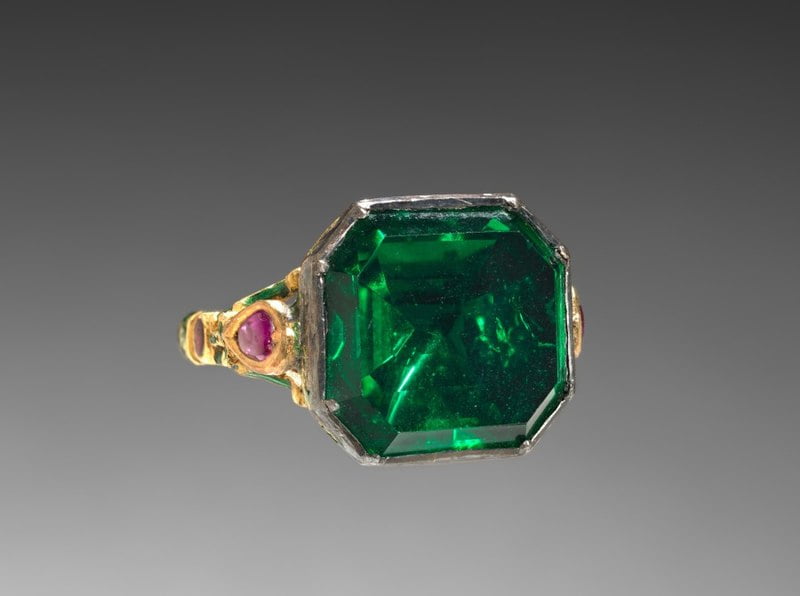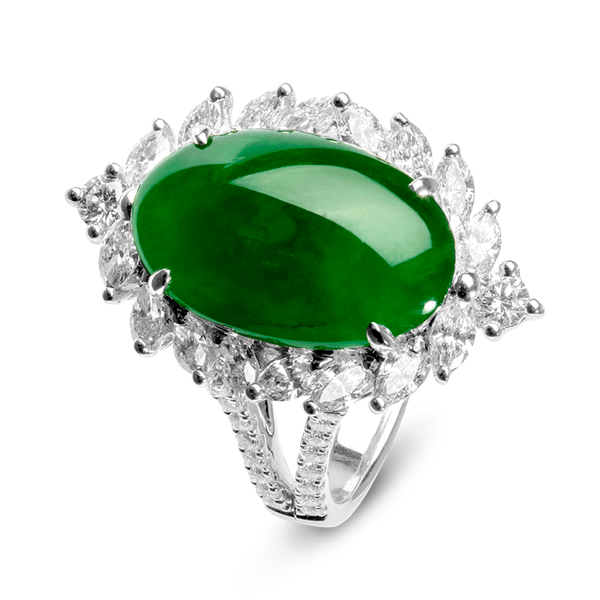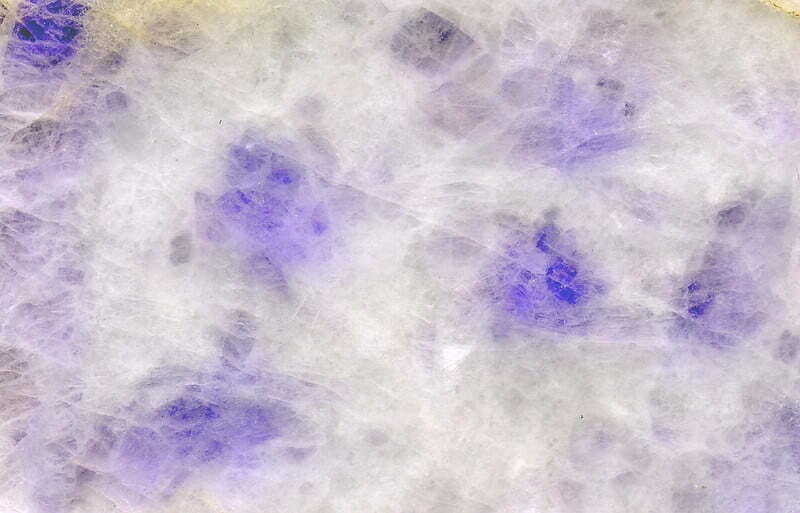Jade vs Emerald: What Are the Differences?

Jade vs emerald: these two distinct gemstones have unique properties that set them apart. Jade is a term for two different minerals, nephrite and jadeite, and can be found in various colors, including green, white, yellow, lavender, red, orange, blue, and black. Emerald, a variety of the mineral beryl, is primarily green, ranging from light to deep shades.
The key differences between jade and emerald are their composition, color, luster, and hardness.
Jade vs Emerald: Value and Rarity
When it comes to precious gemstones, jade and emerald are both admired for their beauty and unique characteristics. In this article, we will explore the differences between jade and emerald in terms of value, rarity, durability, and their use in jewelry.
| Feature | Jade | Emerald |
|---|---|---|
| Mineral composition | Nephrite or jadeite | Beryl |
| Color | Light to dark green. Many other colors. | Medium to dark green |
| Clarity and opacity | Opaque to translucent | Usually transparent to translucent |
| Location | Worldwide. China, Myanmar, Russia, Canada, New Zealand | Colombia, Brazil, Zambia |
| Hardness | 6-7 on the Mohs scale | 7.5-8 on the Mohs scale |
| Price | Generally less expensive | Generally more expensive |
Price
Jade and emerald can vary significantly in price depending on factors such as quality, color, and size. While jade can be found at more affordable prices, particularly for lower-quality pieces or less saturated colors, top-quality jade, especially the Imperial jade variety, can fetch exceptionally high prices. Emeralds, known for their vibrant green color, can also command high prices, particularly when they exhibit a deep, rich color and have few inclusions.
Rarity
Both jade and emerald are considered rare gemstones, but their rarity is relative to the specific type and quality. Jadeite, one of the two minerals commonly referred to as jade, is rarer and generally more valuable than nephrite. Imperial jade, a type of jadeite with a vivid emerald green color, is the most sought-after and rarest form of jade. Emeralds, particularly those with intense green colors and minimal inclusions, are also considered rare and valuable.
Durability
When comparing jade vs emerald in terms of durability, jade typically has a Mohs hardness of 6-7, while emerald has a slightly higher hardness of 7.5-8. However, jade is known for its exceptional toughness, making it more resistant to breaking and chipping than many other gemstones, including emerald. On the other hand, emeralds are often more prone to fractures and inclusions, which can make them more fragile and susceptible to damage.
Uses in Jewelry
Both jade and emerald are popular choices for various types of jewelry, from rings and earrings to necklaces and bracelets. Jade has been used in jewelry and decorative objects for thousands of years, particularly in Asian cultures, where it is highly valued for its symbolism and beauty. Its toughness makes it suitable for carving intricate designs, beads, and cabochons.
Emeralds, known for their vibrant green color, are often used in high-end jewelry pieces and are particularly popular for engagement rings. Due to their relative fragility, emeralds are typically cut in styles that protect the gemstone, such as the classic emerald cut, which features a rectangular shape with beveled corners.
Jade and emerald each possess unique qualities that make them desirable choices for jewelry and collectors alike. While jade is admired for its range of colors, toughness, and intricate carving possibilities, emerald is sought after for its striking green hues and association with luxury. Understanding the differences between jade vs emerald in terms of value, rarity, and durability can help you make an informed decision when selecting the perfect gemstone for your needs.

Jade vs Emerald: Symbolism and Metaphysical Properties
Jade and emerald have been cherished throughout history not only for their beauty but also for their symbolism and metaphysical properties. In this section, we will explore the cultural significance, associations, and metaphysical properties of both jade and emerald.
Cultural Significance and Symbolism of Jade
Jade has been highly prized in various cultures, especially in Asia, for thousands of years. In Chinese culture, jade is considered a symbol of purity, virtue, and grace. It has been used in various art forms, carvings, and ceremonial objects, and is often associated with protection, good fortune, and spiritual growth. Confucius even regarded jade as a representation of benevolence, wisdom, and courage.
In Mesoamerican cultures, such as the Mayans and Aztecs, jade was associated with royalty, power, and the gods. It was used in various ceremonial and religious contexts, and was believed to possess powerful spiritual and protective qualities.
Associations and Symbolism of Emerald
Emerald has been revered in various cultures for its rich, vibrant green color, which has led to associations with nature, rebirth, and fertility. In ancient Egypt, emeralds were associated with the goddess Isis, who represented life and rebirth. The Romans connected emeralds with Venus, the goddess of love, and believed the gemstone could promote love and passion.
In Western culture, emeralds are often associated with wealth, luxury, and prestige. They are considered symbols of hope, wisdom, and eternal love, and are often used in engagement rings and other high-end jewelry pieces.
Metaphysical Properties
Jade and emerald are believed to possess unique metaphysical properties that can benefit their wearers on a spiritual, emotional, and physical level.

Jade
Metaphysical properties of jade are thought to have powerful healing and protective qualities. It is believed to promote emotional balance, harmony, and wisdom, while also attracting abundance and prosperity. Jade is also associated with spiritual growth, inner peace, and self-reflection. Its protective qualities are thought to shield its wearer from negative energies and promote overall well-being.
Emerald
Emerald is believed to possess powerful energies that can encourage personal growth, emotional healing, and clarity of mind. It is thought to help improve communication, enhance intuition, and inspire creativity. Emerald is also associated with fidelity and unconditional love, making it a popular choice for engagement rings and other romantic jewelry pieces. Additionally, emerald is said to have a soothing effect on the emotions, helping to alleviate stress and bring balance to the heart chakra.
Jade and emerald each hold unique cultural significance, symbolism, and metaphysical properties. While jade is associated with protection, prosperity, and spiritual growth, emerald is connected to love, wisdom, and emotional healing. Understanding the symbolism and metaphysical properties of jade vs emerald can further enhance the appreciation and personal connection with these beautiful gemstones.
How to Choose Between Jade and Emerald
| Pros | Cons | |
|---|---|---|
| Jade | – Comes in a wide range of colors and patterns, including white, black, yellow, and lavender, as well as mottled and speckled varieties. | – While being a hard stone, it is softer than many other gemstones. |
| – Is often less expensive than emerald or other high-end gemstones. | – Can be difficult to distinguish from cheaper imitations or fakes, which can make it a target for fraud. | |
| – Has been used for centuries in art, jewelry, and sculpture, especially in Chinese and Southeast Asian cultures. | – May be less brilliant or sparkling than emerald, which can affect its visual appeal. | |
| – Is believed to have healing and protective properties in some traditions, and is associated with good luck and longevity. | – Is not as rare or valuable as emerald, which can affect its status as a luxury item. | |
| – Can be carved into intricate shapes and designs due to its relative softness. | – May not be as versatile as emerald in terms of its use in high-end jewelry or fashion. | |
| Emerald | – Has a rich, deep green color that is prized for its beauty and elegance. | – Can be very expensive, especially for high-quality stones that are large, clear, and free of inclusions. |
| – Is usually more brilliant and sparkling than jade, thanks to its hardness and transparency. | – Can be brittle and prone to cracking or chipping, especially if it has inclusions or other imperfections. | |
| – Is a traditional choice for engagement rings, and is associated with love, loyalty, and fidelity. | – May be treated or enhanced to improve its appearance, which can affect its value and authenticity. | |
| – Has a long and rich history dating back thousands of years, and has been revered by cultures around the world. | – May not have the same cultural or symbolic significance as jade in some regions. | |
| – Is often used in high-end jewelry and fashion, and is associated with luxury, sophistication, and status. | – May be more difficult to work with than jade due to its hardness, which can limit its use in certain types of jewelry or sculpture. |
Selecting the perfect gemstone for your needs can be a daunting task, especially when comparing beautiful options like jade and emerald. In this section, we will provide some guidance on how to choose between jade and emerald based on various factors, including personal preferences and budget.
Considerations
Before making your decision between jade and emerald, consider the following factors:
- Color: The color of jade varies widely, including shades of green, white, yellow, lavender, red, orange, blue, and black, while emerald is primarily known for its vibrant green hues. Consider which color best suits your personal style and the specific piece of jewelry you have in mind.
- Durability: Jade is known for its toughness, making it more resistant to breaking and chipping than emerald. If durability is a concern, jade may be a more suitable option, especially for everyday wear or pieces that might be more prone to damage.
- Symbolism and metaphysical properties: As discussed earlier, jade and emerald each possess unique symbolism and metaphysical properties. Consider which attributes resonate most with you or the intended recipient of the gemstone.
- Rarity and value: Jadeite jade, particularly Imperial jade, and high-quality emeralds with intense green color and minimal inclusions are considered rare and valuable. If rarity and value are important factors, research the specific type and quality of jade or emerald you are considering.
Personal Preferences
Personal preferences play a significant role in choosing between jade and emerald. Some individuals may be drawn to the rich green color and classic elegance of emerald, while others may prefer the diverse color palette and unique carving possibilities of jade. Consider your personal style, the type of jewelry you want to create or wear, and the gemstone’s symbolic meaning when making your decision.
Budget
Budget is an important factor when selecting a gemstone. Jade can be found at more affordable prices, especially for lower-quality or less saturated colors, while high-quality jade and emeralds can command significantly higher prices. Determine your budget and research the types of jade and emerald that fall within your price range, taking into consideration factors such as size, color, clarity, and overall quality.


